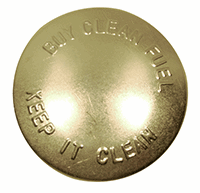UPDATE--These pics and story are late getting to you by over two months. My bad, I just forgot to post the pics.
They had a diver and salvage team come in a few days later to look at the best way to raise the boat. They decided that putting air bags beneath it and raising it very slowly was the secret. At that point the only diesel leak was a small bubbling up from the diesel heat tank. The tank was sealed off and that stopped it.
Then the diver went down and positioned the lift bags beneath the boat. They secured the bags to the bow rail to keep them from moving fore or aft and started raising the stern first because that's where most of the weight was.
This is a local diver who owns his own dive rescue company. He started early, before the other diver got there, to see if he could plug the diesel leak.
Here's the salvage team diver getting ready to go in and put the float bags in place.
Here they have a bag or two attached below and are starting to inflate them. You can see that the boat is starting to rise. It came up on the stbd side first because some of the port side chine had gotten stuck in the mud bottom and created a suction. At this point they're still trying to pump water out with three pumps running. What they didn't realize (and I wasn't about to tell them) was that with the boat's windows still below water, the water was coming back in as fast as they were pumping it out.
Here they finally got the bottom of the hull unstuck from the mud and it's starting to rise.
I stuck around for several hours but the light was fading so I took off. The next morning I went back down there early and here's what I'd found.....the boat was floating on its own with no pumps required.
They had worked throughout most of the night because once it started coming up they didn't want to stop for fear of it sinking back down. The bags are still attached just as a safety measure.
The end result was they found that a thru-hull that led to one of the engines had frozen and broke. I'm not sure if the fitting broke or the hose attached to it broke, but that was the source of the water.
The boat now belongs to the insurance company. It's still at the dock because the insurance company is starting to realize that:
1. It is going to cost a lot to tow it to a place where it can be lifted. It can be lifted at Lampson Crane's yard which is about 2 miles downriver.
2. It's going to cost a fortune for the cranes and crews to lift it. (DOH!!!)
3. Once they lift it they'll have to put it on a trailer, and they can't find anyone who owns a trailer that's not being used and could afford to let it sit under this boat for months,
4. They can't move it from Lampson's yard without dismantling it because it's too tall so they'd have to bring in a crew to remove the flybridge, etc.
5. They don't want to do that until the boat is sold at auction because they don't want to stand the cost of removing the flybridge.
So here we sit with this beautiful boat floating on its own, just sitting there. They should have had someone come in a pickle the engines right off the boat, but again, that costs money which they didn't want to spend.
At this point it's cheaper for them to continue to pay the moorage on the than for someone to have to make a decision on what to do with it, for which that person would likely be criticized later because they spent a ton of money on getting the problem handled.
So, until the owner (who, by the way has already been paid by the insurance company) gets his new aluminum hull boat built and needs that slip to store it in, it's likely just going to sit there.
And now, as Paul Harvey would say, you know the rest of the story.













